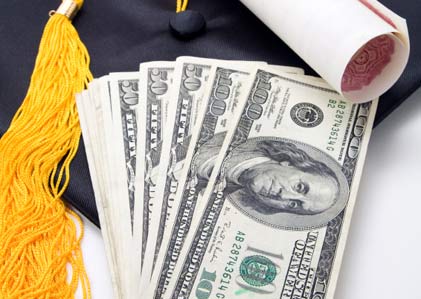Examples of HVAC Loan Forgiveness & Repayment Programs
Despite the limited loan forgiveness and repayment options specifically designated for HVAC technicians, those employed in public service industries can still benefit from loan programs such as the Public Service Loan Forgiveness (PSLF) Program. The program, overseen by the federal government, provides loan forgiveness after a specific period of employment in an area of public service. In addition, loans may also be eligible for partial loan cancellation if the borrower works within underserved regions specified by the federal government.
Additionally, private loan programs available through loan servicers can offer alternative loan repayment assistance to HVAC technicians.
Here are some student loan forgiveness and repayment options for HVAC technicians.
Public Service Loan Forgiveness (PSLF) Program
The Public Service Loan Forgiveness (PSLF) Program is a loan forgiveness program that allows borrowers to have their federal student loan debt forgiven if they meet a specific set of requirements. The office of Federal Student Aid (FSA) created this loan repayment option to offer financial support and peace of mind to those in qualifying public service positions.
Eligibility is determined by demonstrating full-time, qualifying public service employment and 120 qualifying payments on eligible loans. One month is counted as one payment towards the total needed for loan forgiveness. To finalize loan forgiveness, borrowers must apply for PSLF after meeting the qualification obligations. Through loan forgiveness and repayment programs, HVAC techs working in public service can rest easy knowing they have options to help manage loan obligations.
Income-Driven Repayment (IDR) Plans
Income-Driven Repayment (IDR) Plans are loan repayment options available to borrowers needing additional assistance making their monthly loan payments. The federal government provides these plans so individuals can pay a loan based on their income. This makes loan repayment more affordable and manageable.
The government offers four types of federal loan forgiveness and repayment programs, each providing different features, such as loan forgiveness after a specified number of years. By participating in one of these programs, borrowers can reduce their loan burden, stay current with their loan payments, and even be forgiven for loan balances. In addition, IDR Plans benefit those who may have difficulty affording traditional student loan payment plans.
Income-Driven Repayment (IDR) Plans are designed to help low-to-middle-income individuals. The BLS reports that the average salary of HVAC technicians falls slightly above the national average for all occupations. By utilizing IDR plans, HVAC techs can pay off their student loan debt on a sustainable schedule.
Debt Consolidation: Federal Loans
For those struggling to manage multiple federal loans, Direct Consolidation Loans present an effective solution. These loans allow borrowers to consolidate all their existing Direct Loans or FFEL Program loans into one loan, come with a fixed interest rate, and offer extended repayment terms. This leads to lower monthly payments and opens the way to other advantageous repayment options, such as Public Service Loan Forgiveness (PSLF) or income-driven repayment plans.
Debt Consolidation: Private Loans
Private banks and lenders are an important source of student loan debt for many college students. Although private debt can be more challenging to manage than government debt, debt consolidation for these loans can make finding solutions much more straightforward.
In addition, by consolidating multiple loans into one or fewer loans, students may often find reduced interest rates that help improve debt payments. However, it is essential to note that such debt consolidation often extends the loan period, leading to higher overall payments in the long run.



